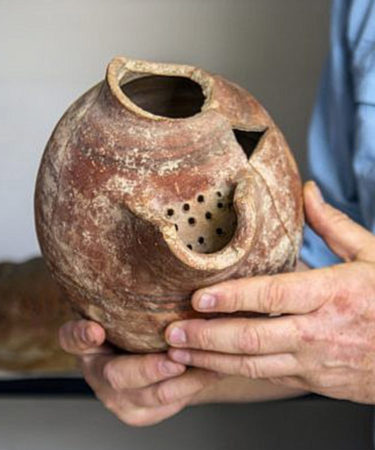A team of microbiologists, archaeologists, and “crazy beer makers” recently recreated an ancient Egyptian beer using yeast found in 5,000-year-old pottery vessels, Times of Israel reports.
The study was led by Dr. Ronen Hazan, a microbiologist at the Hebrew University’s Institute of Dental Sciences and School of Dental Medicine, along with his colleague Michael Klutstein and former Jerusalem brewmaster Itai Gutman. The project then expanded to include archaeologists and biologists from Hebrew University, the Israel Antiquities Authority, Tel Aviv University and Bar-Ilan University.
The team of scientists used pottery sherds found in four Holy Land sites to isolate and propagate six ancient yeast strains, then brew a beer similar to what the Egyptians may have been drinking thousands of years ago. Sites included “biblical Tell es-Safi/Gath (ca. 850 BCE), Bronze Age En-Besor in the Negev and an Egyptian brewery found in Tel Aviv’s Ha-Masger Street (both ca. 3100 BCE), and Jerusalem’s Ramat Rachel (ca. 8th to 4th century BCE),” the Times reports.
Their analysis showed that one yeast strain is in the same family as the yeast currently used in African beer production, particularly those brewed with sorghum malt, an ingredient that would have been used in ancient beer-making. Another yeast strain from the remains was Saccharomyces cerevisiae, the most popular strain used for beer, wine, and bread today.
“It was fun for us to work for a change in such a multidisciplinary environment of biologists, archaeologists and crazy beer makers,” Hazan told the Israeli newspaper.
Archaeologist Dr. Yitzhak Paz, of the Israel Antiquities Authority, says this is the first time living yeast have been extracted, identified, and recreated from ancient pottery vessels.
